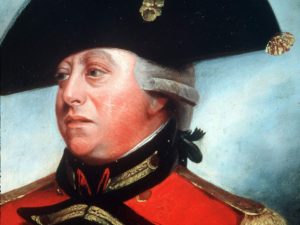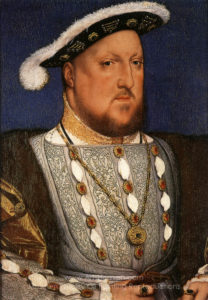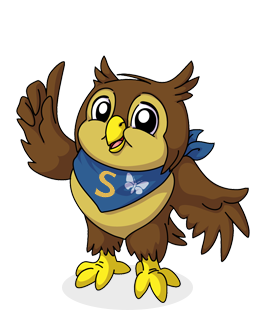Good morning everybody, here are your tasks for today:
Maths
Mental Arithmetic: 9x tables.
Today I would like you to visit this website . It is a lovely little website which has a series of steps to learning the 9x tables. Today I would like you to complete steps 1a, 1b and 2 practising the 9x tables in order.
Please access your TTRockstars account as well, using your Purple Mash logon details and play some games. Remember, your scores will count towards our whole school competition scores against other local schools this week!
Maths No Problem: Textbook 5B Chapter 11 Measurements.
Lesson 7: Converting units of mass.
In Focus: Have a look at the task and discuss it. What is the key information given? Think what the problem is asking us to do, can we draw a bar model to answer this? We use bar models in class to visualise a problem and help us calculate it. What information do we have, what do we know and how could we use that to draw and label a bar model?
Let’s Learn: I would now follow Let’s Learn 1 and 2 to work through solving the problem.
Let’s Learn 1: Questions to discuss while looking at Let’s Learn 1. Is it possible to convert 1.68 kg into grams by partitioning? What does ‘partitioning’ mean? To separate into place values. What would you partition the mass into? Does it help if we know what 1 tenth and 1 hundredth of 1.68 kg is in grams? Discuss how 1.68 kg converts to 1680g.
Let’s Learn 2: Discuss how if we take away 360 g from 1680 g we would have the mass of flour used for 6 pies. Using the bar models at the top of page 167, you can see how the difference in the mass of flour used is equivalent to the total mass of flour used for the 6 pies. If we know 6 pies used 1320g of flour, can we find out how much flour was used for 1 pie? See if pupils can share a number of methods to work this out. Can 1320g be partitioned into numbers that could be more easily divided by 6? Guide them to see if they add 1680 g and the mass of flour of 6 pies (1320g) they will find the total amount of flour used: 3000g. Can you convert this into kilograms?
Guided Practice: During Guided Practice, your child will be converting kilograms into grams and dividing by a whole number.
Workbook: Please complete worksheet 7, pages 111 – 112.
English
Reading: Well done to those of you who are reading widely and completing quizzes, but we are still only at 17 minutes average reading per day as a class! Come on year 5, get reading and get quizzing! If you have a Lexia account, please log on and complete at least 15 minutes a day.
Don’t forget your Book Buzzes! If you have recently read a book which you would really like to Buzz, send it through to me and I will include it in next week’s Home Learning post!
Writing: To start with, let’s revisit our definitions from yesterday. Have a look at this picture and discuss which images reflects the definition of the word in between them both.
Now, please revisit again our Talk For Writing ‘Rhiswanozebtah’ information text from Ted Splorer using your storymap.
Today, we will be thinking about our information text in more detail. Please answer the following comprehension questions in your journals:
- What are the four distinct animals that make up the Rhiswanozebtah?
- The Rhiswanozebtah likes to sleep in patches of grass. Is that statement TRUE or FALSE?
- What evidence is there to suggest that the Rhiswanozebtah is agile?
- Find and copy a word that is closest in meaning to unlikable.
- The text refers to areas the Rhiswanozebtah inhabits. What are they?
- Copy table below. Tick the food that the Rhiswanozebtah would eat:
Foods Would eat Would not eat Rabbits Cauliglowers Leaves Snakes Water Buffalo
7. Why might the Rhiswanozebtah be so rare?
8. Which section of the text tells you about what the Rhiswanozebtah can do? Write the opening sentences of that section:
9. Give two ways in which the Rhiswanozebtah could be a nuisance.
10. At the end of the text it states:
Amazingly however, there have been rare sightings in other parts of the world, so just maybe, the Rhiswanozebtah will be spotted in a neighbourhood near you in the not – so – distant future.
What might happen if a Rhiswanozebtah did make its home near to where you live? List the things that you might witness as a result of this new creature moving in. Consider all the facts about how it behaves.
Topic: History
Well done and thank you to all of you who have sent me your topic work from this week, I am loving seeing your drawings and reading your research. You are all staying so focused and resourceful it is just great to see!
You all did well to estimate the ages of the maps, the dates are as follows:
Map 1 = 1774 Map 2 = 1600’s Map 3 =Early 1500’s Reign of Henry VIII
This week we will be researching Royalty associated with our town and using some of our artistic skills to represent them.
Please look closely at the pictures of two Kings associated with our town below, King George III and King Henry VIII.


Your first task is to choose one and draw their portrait in your own style in your journals. The great thing about art is that there is no right or wrong way of doing it, it is completely your own work.
Think carefully about using your pencil to copy the lines, shadows and tone of the image. Look closely at the clothing and headwear, how do they both differ?
Your second task is to research and write up a little bit of history of your chosen monarch and how they are related to Weymouth. You could use Google, Wikipedia or The Weymouth Museum websites. Or try http://www.weymouth-dorset.co.uk/ or https://www.weymouthandportland.info/local-history
When did they come to our town? Why did they visit? What did they do here? Did they leave a legacy (something that remains)?
Remember not to just copy what you find out, read through and choose only what you feel is relevant to your research!
I would love to see both your pictures and your research, please send anything to me you would like to show me!



